
THE WORD ON WEEDS
05/18/18 — Heydon Hatcher
Hey farm friends! This week, we are covering one of the major summer farming challenges: weeds! We had a moment to sit down with Becky, our farm manager, and pick her brain on what weeds are rampant at the farm, and how to manage these pesky plants.
![]() Henbit weeds. Photo by Scott David Gordon.
Henbit weeds. Photo by Scott David Gordon.
Weed management is easier in the spring because the soil really needs to heat up for weeds to germinate. Seeds often need more warmth to germinate than to grow. That’s why we often start crops like broccoli in the greenhouse for germination and then transplant them into the fields. All that to say, about a month ago, the soil warmed up enough for the weeds to start germinating and growing. Thus, the beginnings of true craziness at the farm. With all the heat and the sun, this is not only the time when the harvest amounts really start to ramp up, but also, the weeds start flourishing. Everything starts to explode simultaneously, in a beautiful and abundant way, but also a messy and overwhelming way.
During the cooler parts of the year, we can get away with planting more crops bare ground. Different weeds have different thresholds of soil temperature for germination, so something like Henbit tends to germinate in cooler soils; whereas Johnson grass germinates when it gets way hotter. There are seasonal weeds that come through, and the cooler season weeds don’t tend to be as aggressive as the summer weeds. That’s why, as we move into summer, and the weed content starts to skyrocket, we cover more of the crops. Usually, Temo, through cultivation, can keep weeds at a reasonable and manageable level throughout the seasons.
![]() Johnson grass. Photo by Scott David Gordon.
Johnson grass. Photo by Scott David Gordon.
Mechanical Cultivation - Then we move onto mechanized weeding. We use a basket weeder which cultivates direct seeded crops or freshly transplanted crops (when they aren’t as big) on bare ground beds. This mechanism is made of rolling spring wire baskets that thoroughly weed the soil without moving soil into the crop row. These weeders are belly mounted to a tractor and go above and in between the crop rows. Temo does massive amounts of this around the farm. A lot of times, after a good rain, all the weeds will start rapidly germinate and grow, meaning Temo has to go through and cultivate everything on the entire farm to get it at a manageable state again.
In Row Cultivation - This weed management technique is done on the covered beds. The in row weeder is a mechanical tool that attaches to the back of a tractor. It goes through and cultivates the paths in between the covered crop rows. It effectively removes most of the weeds. However, when you walk through the rows, you can see that the paths are weed-free, but tons of weeks still grow in the shoulder, in between the path and the plastic. Speaking of covering plants, there are a few hot weather crops that use boatloads of water and are in the ground a very long time, like tomatoes and peppers. To save water and prevent evapotranspiration, we cover them!
![]() Amaranth. Photo by Scott David Gordon.
Amaranth. Photo by Scott David Gordon.
That's all we have for you this week. Grab your weekly veggie haul at the markets this weekend! 'Til next time!
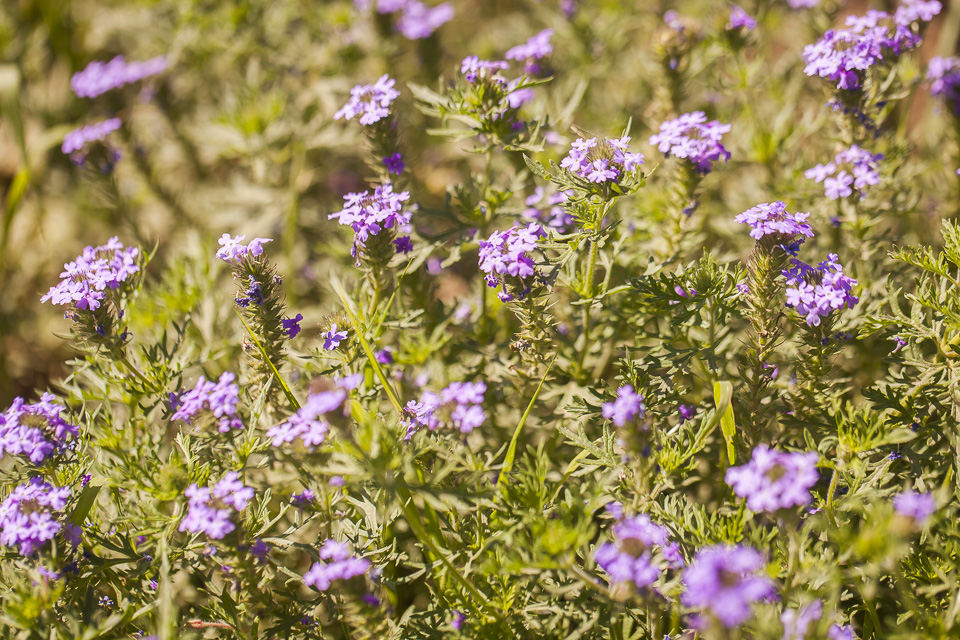 Henbit weeds. Photo by Scott David Gordon.
Henbit weeds. Photo by Scott David Gordon.
Weed management is easier in the spring because the soil really needs to heat up for weeds to germinate. Seeds often need more warmth to germinate than to grow. That’s why we often start crops like broccoli in the greenhouse for germination and then transplant them into the fields. All that to say, about a month ago, the soil warmed up enough for the weeds to start germinating and growing. Thus, the beginnings of true craziness at the farm. With all the heat and the sun, this is not only the time when the harvest amounts really start to ramp up, but also, the weeds start flourishing. Everything starts to explode simultaneously, in a beautiful and abundant way, but also a messy and overwhelming way.
During the cooler parts of the year, we can get away with planting more crops bare ground. Different weeds have different thresholds of soil temperature for germination, so something like Henbit tends to germinate in cooler soils; whereas Johnson grass germinates when it gets way hotter. There are seasonal weeds that come through, and the cooler season weeds don’t tend to be as aggressive as the summer weeds. That’s why, as we move into summer, and the weed content starts to skyrocket, we cover more of the crops. Usually, Temo, through cultivation, can keep weeds at a reasonable and manageable level throughout the seasons.
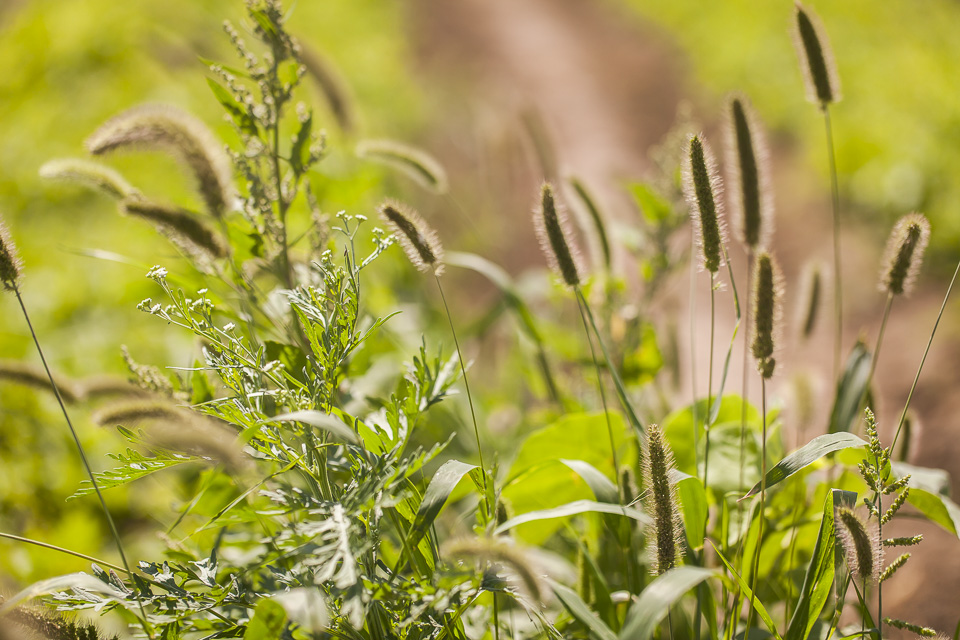 Johnson grass. Photo by Scott David Gordon.
Johnson grass. Photo by Scott David Gordon.
The 4 most ubiquitous weeds at the farm:
- Henbit
- Amaranth
- Lamb’s Quarters
- Johnson Grass
The 3 main ways that we manage weeds at the farm:
Stale Seedbedding - This is when you make a bed in advance, and it either rains or you moisten the beds via sprinkler system. This stimulates all the seeds in the seed bank, or in other words, all the seeds in a bed that are hibernating in the soil. When you get that little bit of water on the soil, all the weeds will start to germinate. There is a morphological state of growth called the white thread state. Basically, the root is just one little white thread. If you disturb the weed at all during this state, you will kill it. On the other hand, when weeds get really large, even if you rip them out, there still might be some rhizomes around. Needless to say, they are harder to kill. So, if you time it right, wet your beds, go in during the white thread stage with a bed shaper, and agitate the top inch of the soil... you will kill all the weeds. Only the seeds in the top inch of the soil are going to germinate anyway. The first time around, it kills a majority of the weeds. If you do it a second time, it kills almost all the weeds that you will have in that bed. So, if you stale seedbed twice, you will virtually have a weed-free direct seedbed. This is a great soil practice, and here at the farm, we try to do it as much as possible. However, this process usually takes a couple of months, when oftentimes we only have a couple of weeks to flip the fields. So it definitely depends on timing, crop planning, weather, etc. This is a preventative soil practice, that saves loads of time later in the season. So, whenever a field is freed up that is slated to be planted, our farm manager prioritizes preparing the beds as soon as possible in the off-chance that it rains, for weed prevention and an all-around easier future harvest!Mechanical Cultivation - Then we move onto mechanized weeding. We use a basket weeder which cultivates direct seeded crops or freshly transplanted crops (when they aren’t as big) on bare ground beds. This mechanism is made of rolling spring wire baskets that thoroughly weed the soil without moving soil into the crop row. These weeders are belly mounted to a tractor and go above and in between the crop rows. Temo does massive amounts of this around the farm. A lot of times, after a good rain, all the weeds will start rapidly germinate and grow, meaning Temo has to go through and cultivate everything on the entire farm to get it at a manageable state again.
In Row Cultivation - This weed management technique is done on the covered beds. The in row weeder is a mechanical tool that attaches to the back of a tractor. It goes through and cultivates the paths in between the covered crop rows. It effectively removes most of the weeds. However, when you walk through the rows, you can see that the paths are weed-free, but tons of weeks still grow in the shoulder, in between the path and the plastic. Speaking of covering plants, there are a few hot weather crops that use boatloads of water and are in the ground a very long time, like tomatoes and peppers. To save water and prevent evapotranspiration, we cover them!
 Amaranth. Photo by Scott David Gordon.
Amaranth. Photo by Scott David Gordon.
That's all we have for you this week. Grab your weekly veggie haul at the markets this weekend! 'Til next time!
WEEK 20 IN PHOTOS
05/18/18 — Heydon Hatcher
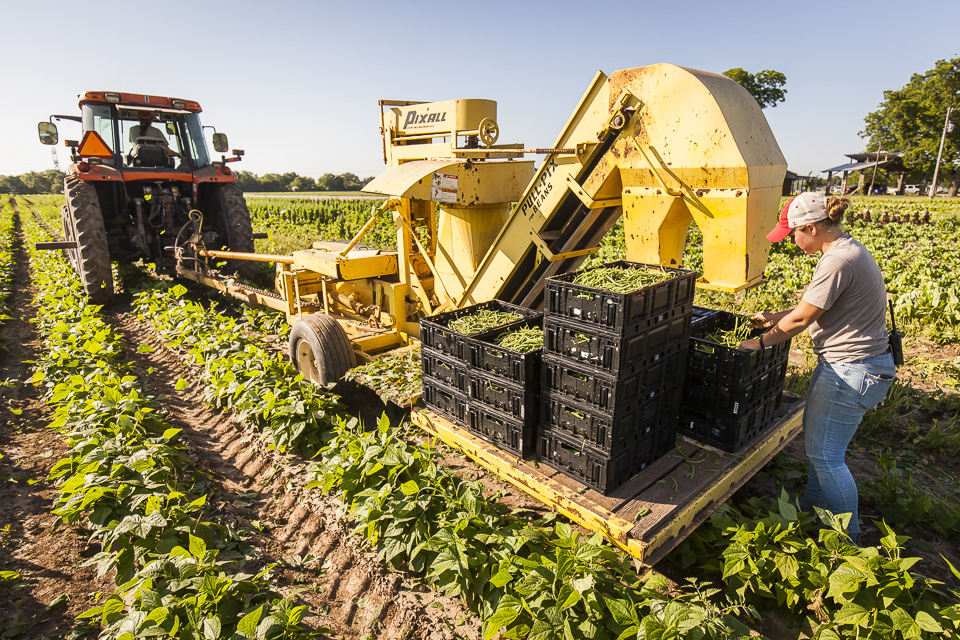 Green bean harvest. Photo by Scott David Gordon.
Green bean harvest. Photo by Scott David Gordon.
It's starting to swelter and the harvests are coming in like crazy. We had our first tomato fruits come in and we are flying high on that sweet, sweet nightshade. We got close and personal with the green bean harvesting this week. Check it out!
In other news, we’re hiring! It’s that time of year when our fields are exploding with vegetables, and we need some more hands! Specifically, we’re hiring for our harvest crew, bulk crew, restaurant packing crew, and also our farmers market crew. If you’ve ever wanted to work on a farm or get more involved with local agriculture - here’s your chance! Best perks of working for a farm? Salt of the earth co-workers and oodles of organic vegetables. Details here.
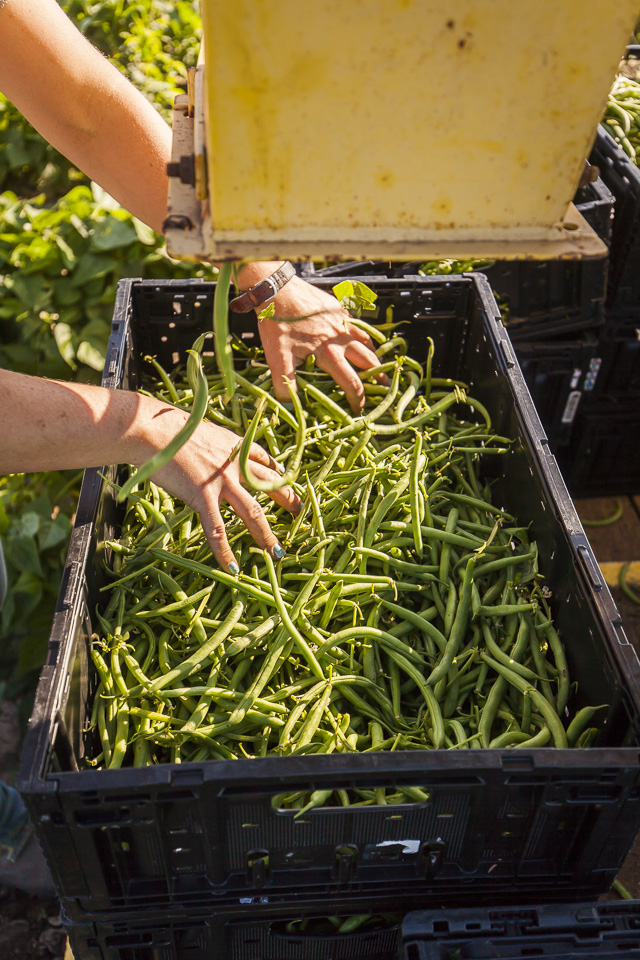 Green bean galore. Photo by Scott David Gordon.
Green bean galore. Photo by Scott David Gordon.
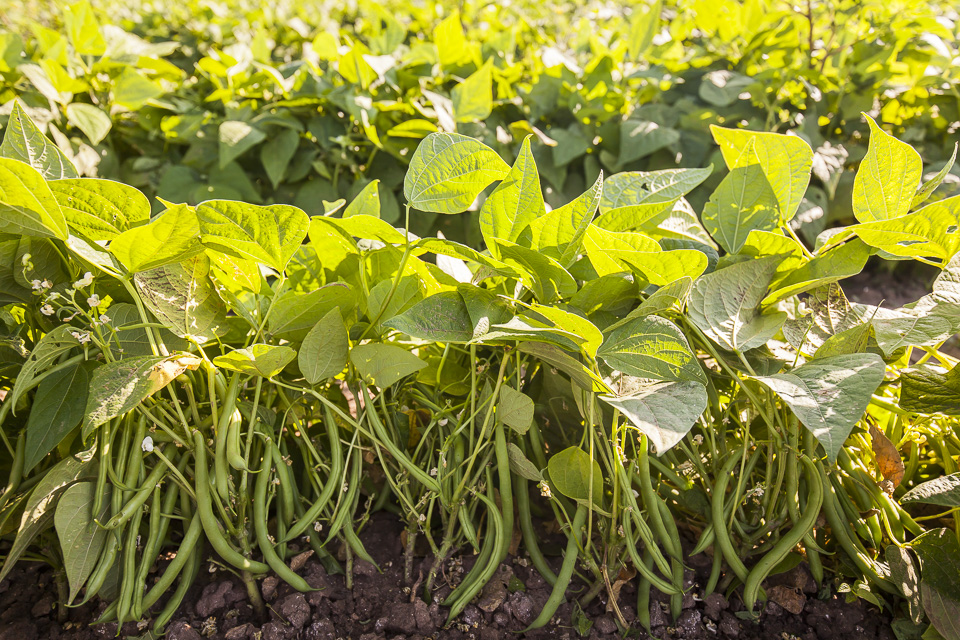 Green beans on the stalk. Photo by Scott David Gordon.
Green beans on the stalk. Photo by Scott David Gordon.
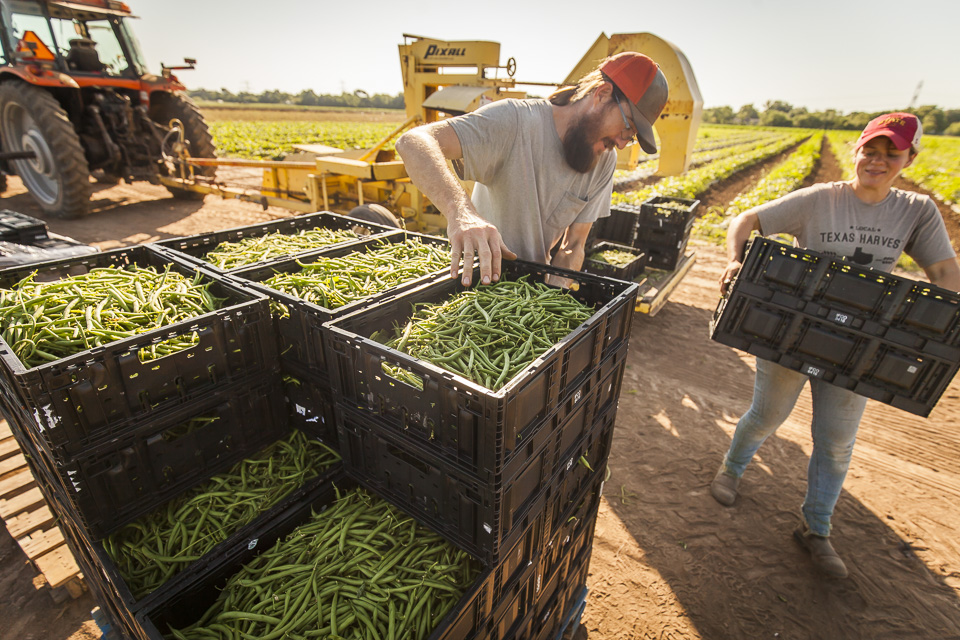 Moving the harvest onto pallets. Photo by Scott David Gordon.
Moving the harvest onto pallets. Photo by Scott David Gordon.
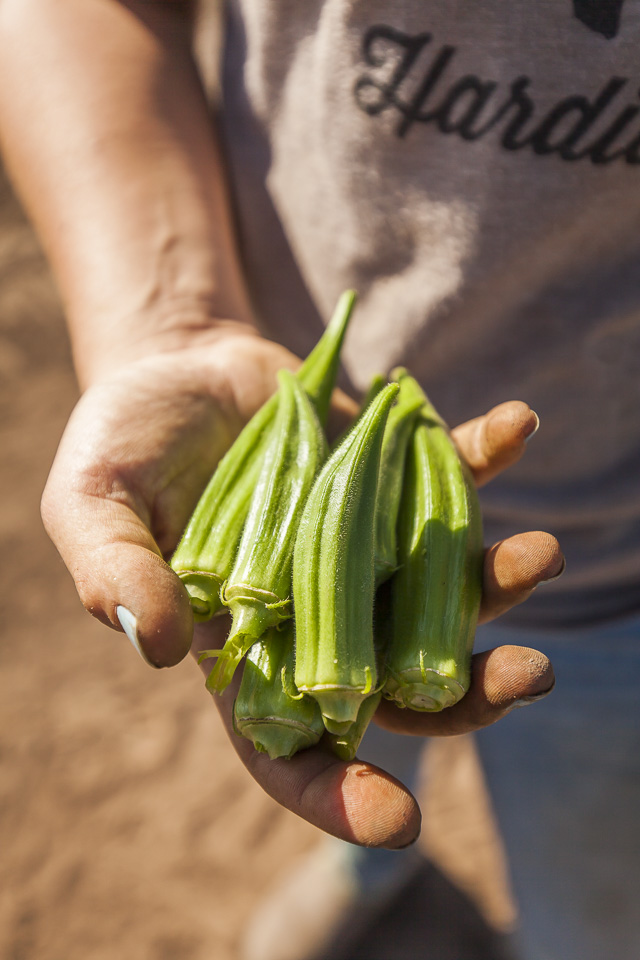 Summertime darling, okra! Photo by Scott David Gordon.
Summertime darling, okra! Photo by Scott David Gordon.
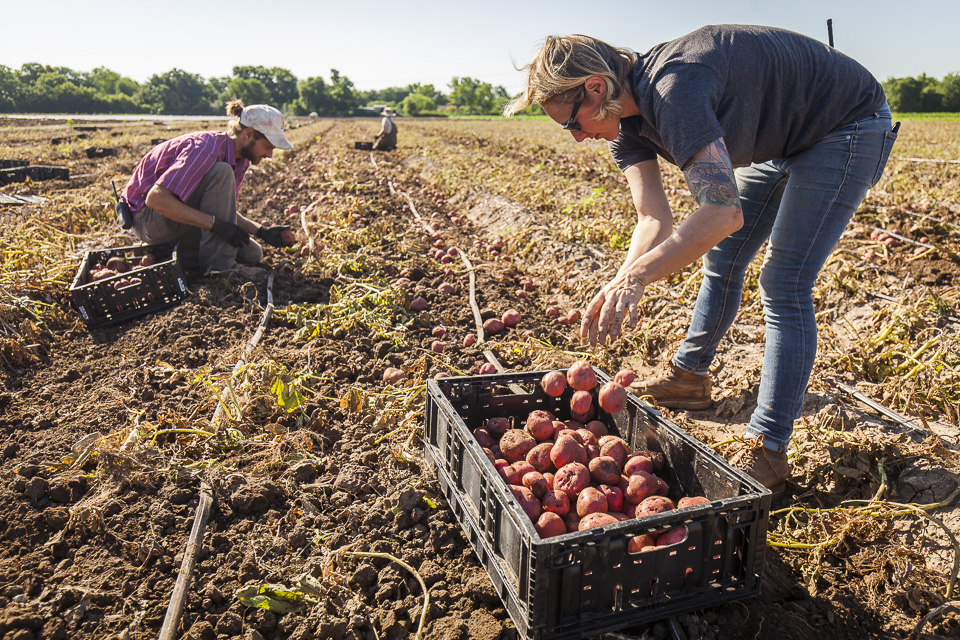 Potato harvest. Photo by Scott David Gordon.
Potato harvest. Photo by Scott David Gordon.
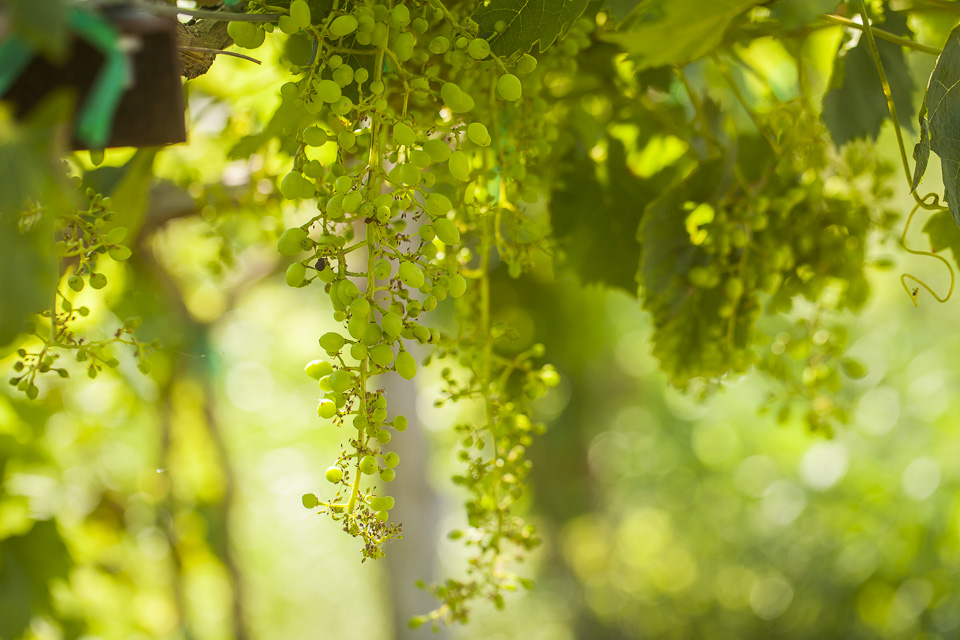 Grapes a-growin'! Photo by Scott David Gordon.
Grapes a-growin'! Photo by Scott David Gordon.
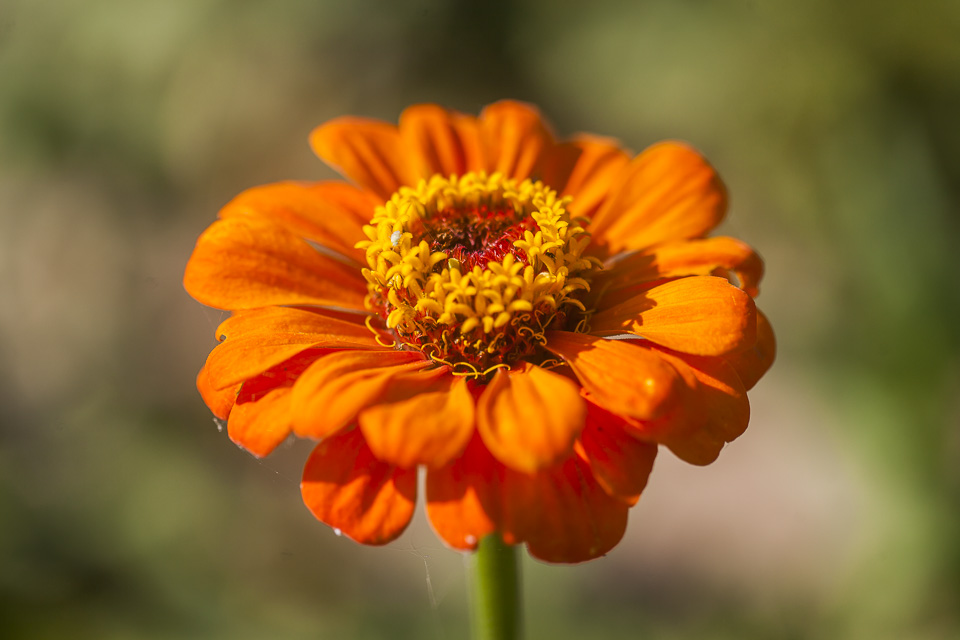 Zinnia glory. Photo by Scott David Gordon.
Zinnia glory. Photo by Scott David Gordon.
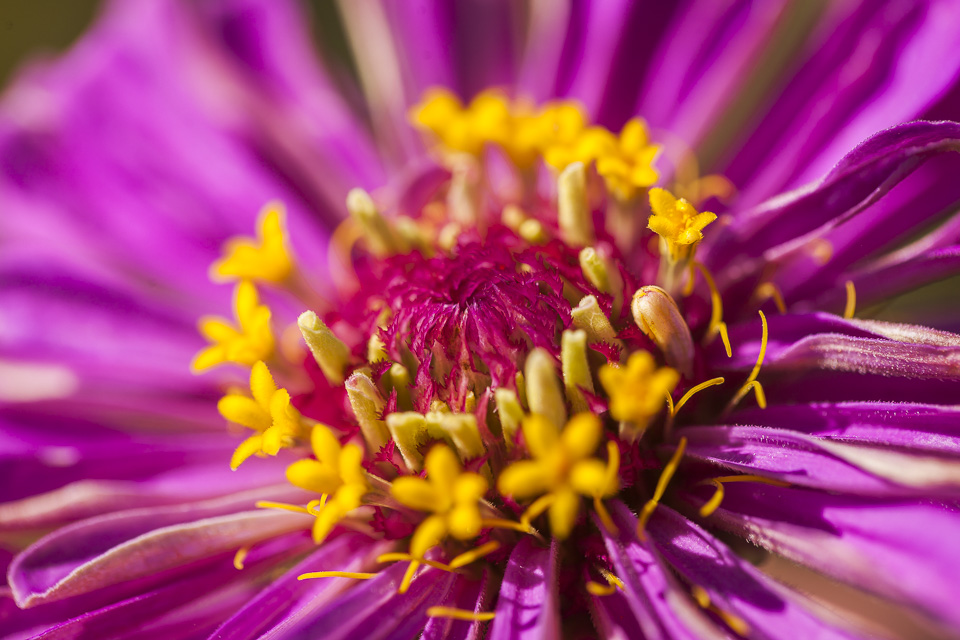 Up close with a gorgeous zinnia. Photo by Scott David Gordon.
Up close with a gorgeous zinnia. Photo by Scott David Gordon.
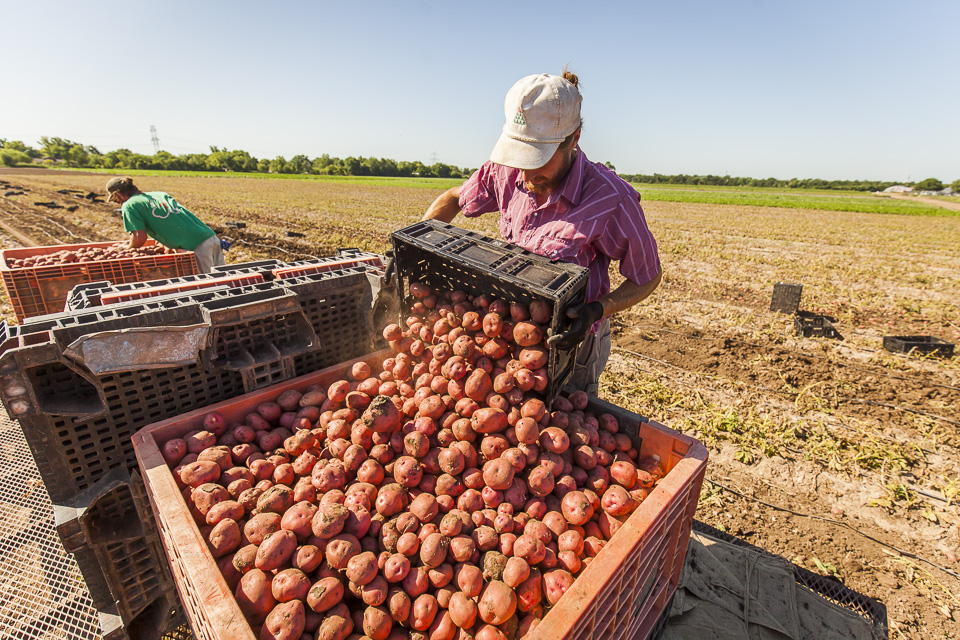 Piling up the 'taters. Photo by Scott David Gordon.
Piling up the 'taters. Photo by Scott David Gordon.
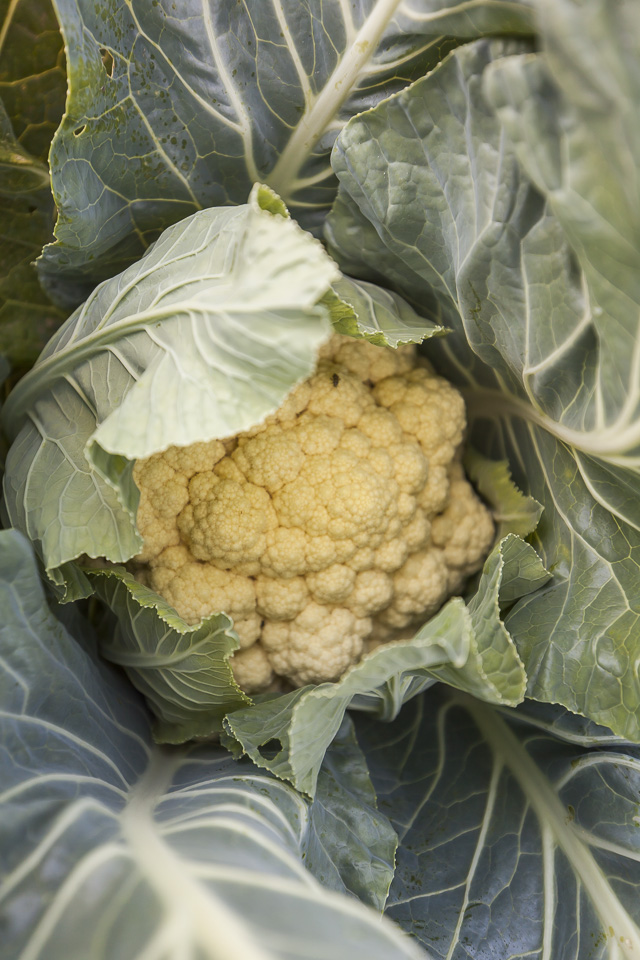 Cauliflower nestled in. Get 'em while they're still here! Photo by Scott David Gordon.
Cauliflower nestled in. Get 'em while they're still here! Photo by Scott David Gordon.
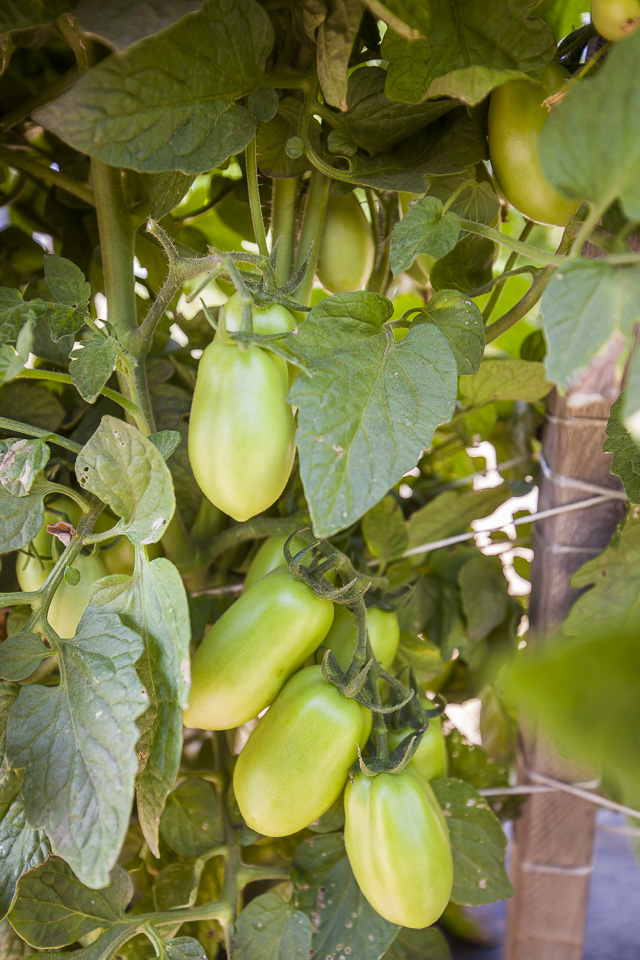 Tomatoes on the vine. Photo by Scott David Gordon.
Tomatoes on the vine. Photo by Scott David Gordon.
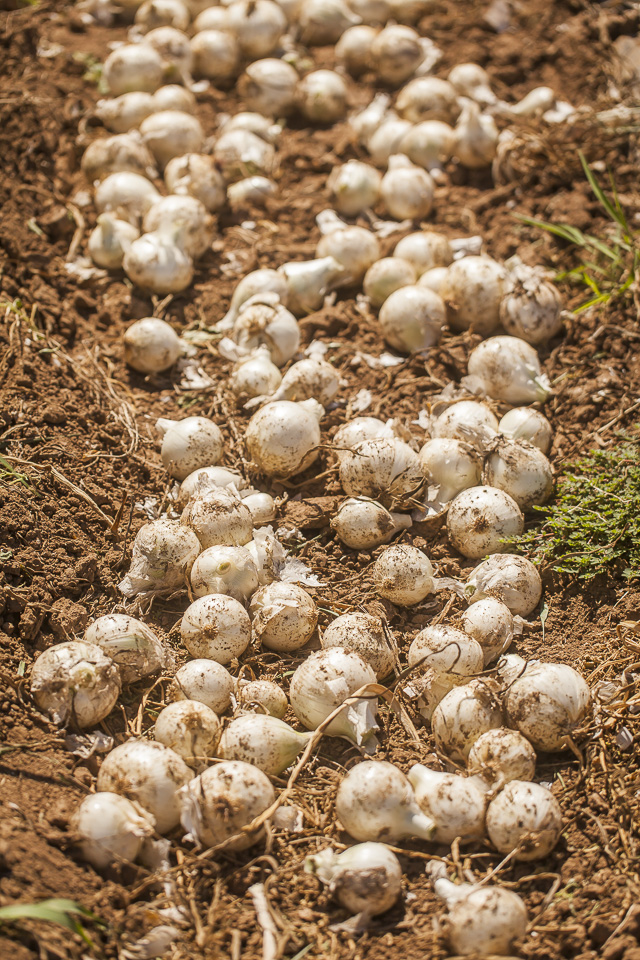 Onions! Photo by Scott David Gordon.
Onions! Photo by Scott David Gordon.
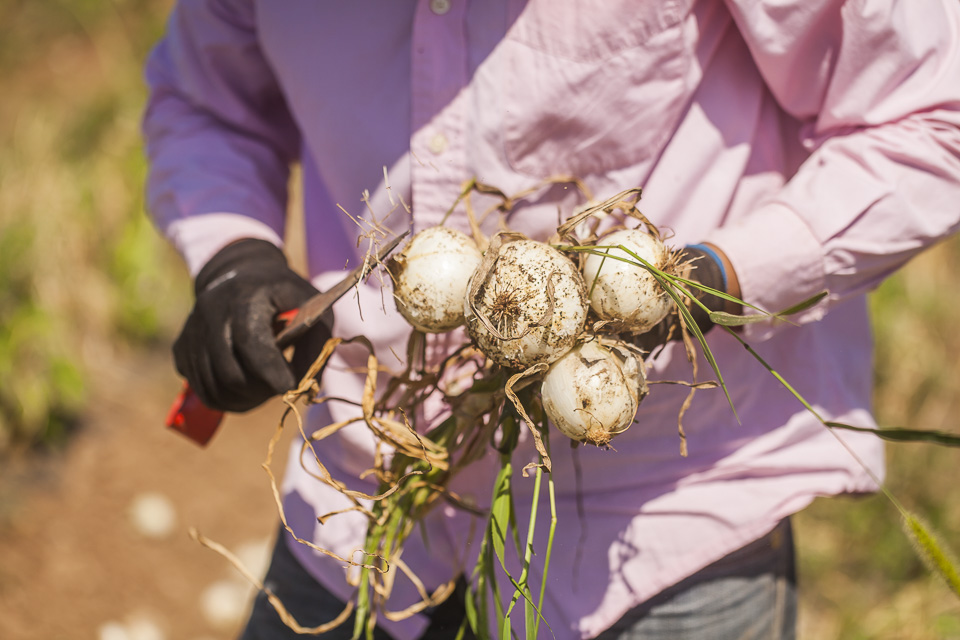 Onion harvest. Photo by Scott David Gordon.
Onion harvest. Photo by Scott David Gordon.
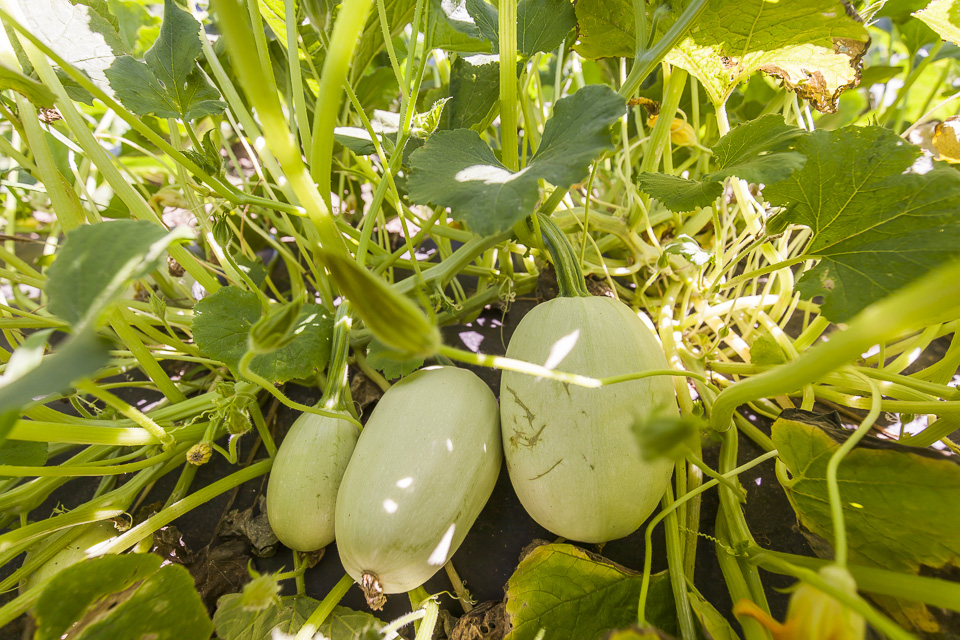 Growing! Photo by Scott David Gordon.
Growing! Photo by Scott David Gordon.PARSLEY BUTTER POTATOES
05/17/18 — Heydon Hatcher
Recipe and Photo by Megan Winfrey
It's all in the title, all 3 ingredients of this wonderfully bright and comforting side dish, and 2 of them come in our spring CSA shares. #WINNING.
I served them alongside flank steak with poblano ranch and sauteed kale for a lovely supper. A few days later, I mashed up the leftovers and stuffed portobello mushrooms to the brim, topped with parmesan, and baked in the oven. (eaten too fast to take a photo)
![]()
Instructions:
As you can imagine, this dish is super easy to put together.
Add small red potatoes to a large pot and cover with cold water by 2 inches.
Bring to a boil over high heat, then lower to a steady boil. Boil about 20 minutes, until the skins start to crack and peel just slightly. You should be able to easily pierce the potatoes with a fork.
Drain the water, leaving the potatoes in the pot.
Using the whole bundle of parsley, separate the leaves from the stems. Finely chop the leaves and sprinkle over the potatoes.
Add 3 tbs. full fat, salted butter. (I'm obsessed with Kerrygold.)
Take the back of a wooden spoon and bonk each potato just once, so it cracks open a bit.
Pretend you're back in the good ole days playing whack-a-mole!
Add a generous amount of salt and pepper to your liking, put the lid on the pot, and shake vigorously. This will break up the potatoes a little more and incorporate the butter, parsley, and seasoning.
It's all in the title, all 3 ingredients of this wonderfully bright and comforting side dish, and 2 of them come in our spring CSA shares. #WINNING.
I served them alongside flank steak with poblano ranch and sauteed kale for a lovely supper. A few days later, I mashed up the leftovers and stuffed portobello mushrooms to the brim, topped with parmesan, and baked in the oven. (eaten too fast to take a photo)

Instructions:
As you can imagine, this dish is super easy to put together.
Add small red potatoes to a large pot and cover with cold water by 2 inches.
Bring to a boil over high heat, then lower to a steady boil. Boil about 20 minutes, until the skins start to crack and peel just slightly. You should be able to easily pierce the potatoes with a fork.
Drain the water, leaving the potatoes in the pot.
Using the whole bundle of parsley, separate the leaves from the stems. Finely chop the leaves and sprinkle over the potatoes.
Add 3 tbs. full fat, salted butter. (I'm obsessed with Kerrygold.)
Take the back of a wooden spoon and bonk each potato just once, so it cracks open a bit.
Pretend you're back in the good ole days playing whack-a-mole!
Add a generous amount of salt and pepper to your liking, put the lid on the pot, and shake vigorously. This will break up the potatoes a little more and incorporate the butter, parsley, and seasoning.
CSA BOX CONTENTS WEEK OF MAY 14TH
05/15/18 — Scott
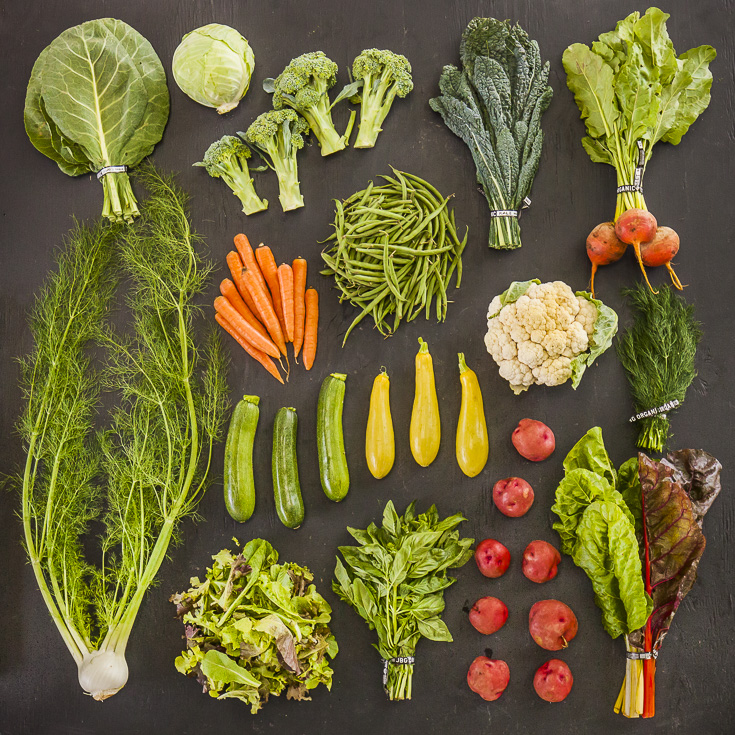 CSA Box Contents Week of May 14th
CSA Box Contents Week of May 14th
Large Box
Beet, Red
Bok Choy, Baby
Cabbage, Red
Carrot, Orange
Cucumber
Eggplant, Mini Purple
Greens, Kale, Curly
Greens, Sweet Potato
Herb, Basil, Red
Onion, Red
Potato, Yukon Gold
Tomato, Green
Beet, Red
Bok Choy, Baby
Cabbage, Red
Carrot, Orange
Cucumber
Eggplant, Mini Purple
Greens, Kale, Curly
Greens, Sweet Potato
Herb, Basil, Red
Onion, Red
Potato, Yukon Gold
Tomato, Green
Medium Box
Cabbage, Red
Carrot, Orange
Cucumber
Greens, Collards
Greens, Kale, Curly
Herb, Basil, Red
Pepper Bell, Purple
Potato, Yukon Gold
Squash, Farmer's Choice
Tomato, Green
Cabbage, Red
Carrot, Orange
Cucumber
Greens, Collards
Greens, Kale, Curly
Herb, Basil, Red
Pepper Bell, Purple
Potato, Yukon Gold
Squash, Farmer's Choice
Tomato, Green
Small Box
Beet, Chioggia
Cabbage
Greens, Collards
Herb, Peppermint
Kohlrabi, Purple
Potato, Red
Tomato, Green
Beet, Chioggia
Cabbage
Greens, Collards
Herb, Peppermint
Kohlrabi, Purple
Potato, Red
Tomato, Green
Individual Box
Beet, Chioggia
Cabbage
Greens, Kale, Curly
Potato, Red
Squash, Farmer's Choice
Beet, Chioggia
Cabbage
Greens, Kale, Curly
Potato, Red
Squash, Farmer's Choice
FROM THE FARMER'S PERSPECTIVE: SPRING FEVER
05/11/18 — Heydon Hatcher
Everyone is definitely feeling spring fever at JBG. The farm is bursting at the seams with veggies, and when we say bursting at the seams, we literally mean it. We are so chockfull of produce that our giant cooler at River Road (30 ft by 30 ft and 22 feet tall) is completely packed. Can you believe it?! This means Ricky, Tim, and Tracy, who keep our coolers organized, are working overtime, moving and rearranging cooler contents to make sure we can keep up and have room for the voluminous harvests.
![]() Sweet potato planting full speed ahead this week. Photo by Scott David Gordon.
Sweet potato planting full speed ahead this week. Photo by Scott David Gordon.
Everyone is busy, busy, busy. The atmosphere at both the River Road farm and the Hergotz packing shed is a little tense simply because the volume of tasks everyone has on their plate. Farming can be absolutely wild!
![]() Towers of tomatoes. Photo by Scott David Gordon.
Towers of tomatoes. Photo by Scott David Gordon.
![]() Squash & zucchini, summer darlings, are at the beginning of their season. Photo by Scott David Gordon.
Squash & zucchini, summer darlings, are at the beginning of their season. Photo by Scott David Gordon.
![]() Gorgeous chard crops. Photo by Scott David Gordon.
Gorgeous chard crops. Photo by Scott David Gordon.
It's really starting to get hot, meaning our breakroom is stockpiled with all the popsicles we can get our hands on. We are harvesting potatoes like crazy, and planting sweet potatoes like crazy, too. We are picking the first green beans this week, and just starting to harvest the green tomatoes. The red tomatoes should be arriving in the next couple of weeks, so dust off those salsa recipes! We are also anticipating a wonderful eggplant crop soon. We are planting okra this week, and harvesting the first planting before long. The grapes and watermelons are starting to size up, and we will have the first peppers at markets this weekend. Friendly reminder to all of our readers that lettuce-based salads are on their way out. Eat your greens while you can!
![]() Cleaning potatoes for markets at Hergotz! Photo by Scott David Gordon.
Cleaning potatoes for markets at Hergotz! Photo by Scott David Gordon.
![]() Peppers! It's heatin' up! Photo by Scott David Gordon.
Peppers! It's heatin' up! Photo by Scott David Gordon.
![]() Beautiful basil. Photo by Scott David Gordon.
Beautiful basil. Photo by Scott David Gordon.
This week has also been a bit of a logistical nightmare at Hergotz! Our reefer truck, which we need to do our Whole Foods distributions among other things, broke down. This truck has been giving us some trouble recently, and farm mechanics have worked their magic on this baby quite a bit. However, it has delivered its final case of kale and is now 'condemned' in our Operation Manager, Krishna's words. The engine needs replacing, which has a price tag of over $20,000. All that to say, we're going to try to replace the vehicle altogether. In addition to our reefer, one of our other delivery vehicles died on the same day that our forklift's starter decided to break... which was on the same day that several folks in the barn were on vacation! There was lots of hand-loading trucks and last-minute staff-shuffling as you can imagine. Our cooler managers were delivery drivers, our marketing managers were CSA crew members, our bulk crew helped with distribution, our drivers acted as mechanics, and even Krishna helped with market preparations. We're tired, to say the least. Come see us at markets this weekend! 'Til next time!
 Sweet potato planting full speed ahead this week. Photo by Scott David Gordon.
Sweet potato planting full speed ahead this week. Photo by Scott David Gordon.
Everyone is busy, busy, busy. The atmosphere at both the River Road farm and the Hergotz packing shed is a little tense simply because the volume of tasks everyone has on their plate. Farming can be absolutely wild!
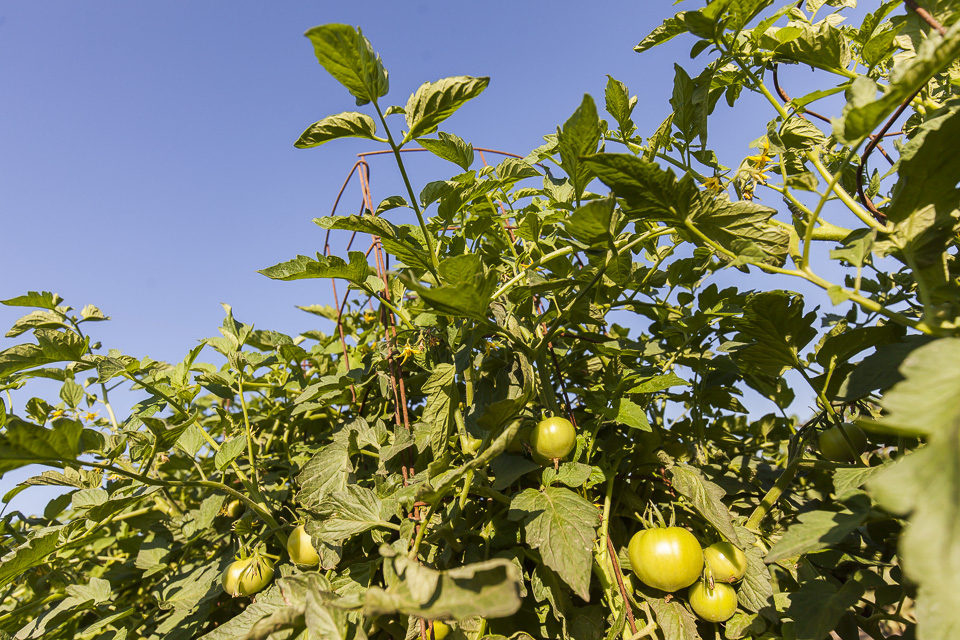 Towers of tomatoes. Photo by Scott David Gordon.
Towers of tomatoes. Photo by Scott David Gordon.
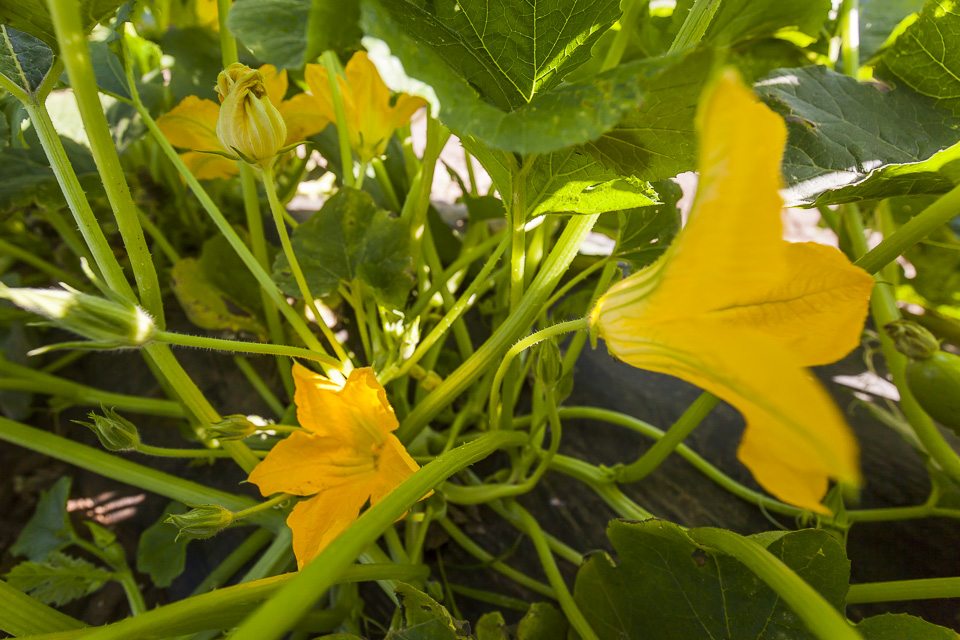 Squash & zucchini, summer darlings, are at the beginning of their season. Photo by Scott David Gordon.
Squash & zucchini, summer darlings, are at the beginning of their season. Photo by Scott David Gordon.
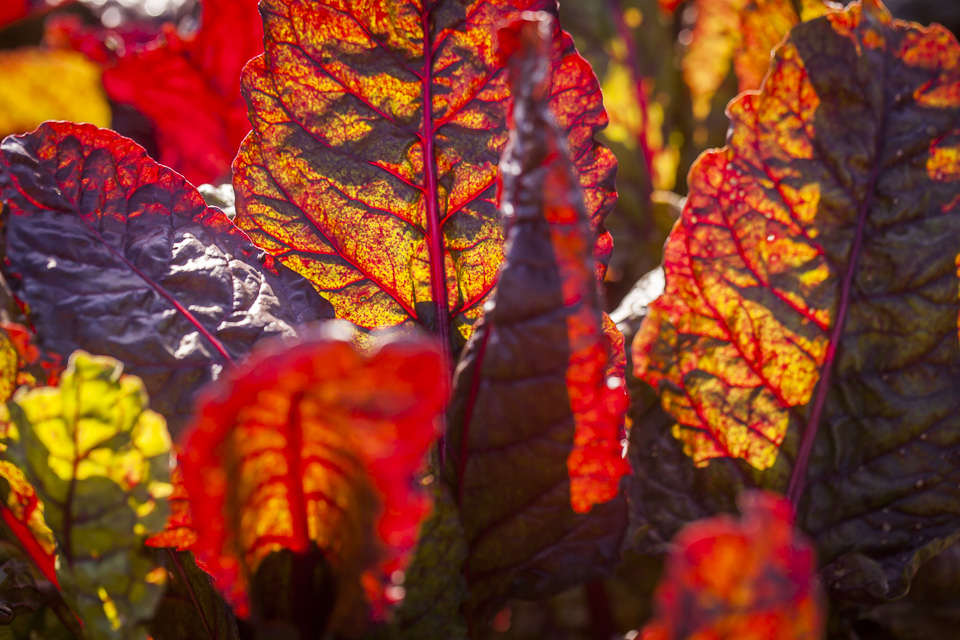 Gorgeous chard crops. Photo by Scott David Gordon.
Gorgeous chard crops. Photo by Scott David Gordon.
It's really starting to get hot, meaning our breakroom is stockpiled with all the popsicles we can get our hands on. We are harvesting potatoes like crazy, and planting sweet potatoes like crazy, too. We are picking the first green beans this week, and just starting to harvest the green tomatoes. The red tomatoes should be arriving in the next couple of weeks, so dust off those salsa recipes! We are also anticipating a wonderful eggplant crop soon. We are planting okra this week, and harvesting the first planting before long. The grapes and watermelons are starting to size up, and we will have the first peppers at markets this weekend. Friendly reminder to all of our readers that lettuce-based salads are on their way out. Eat your greens while you can!
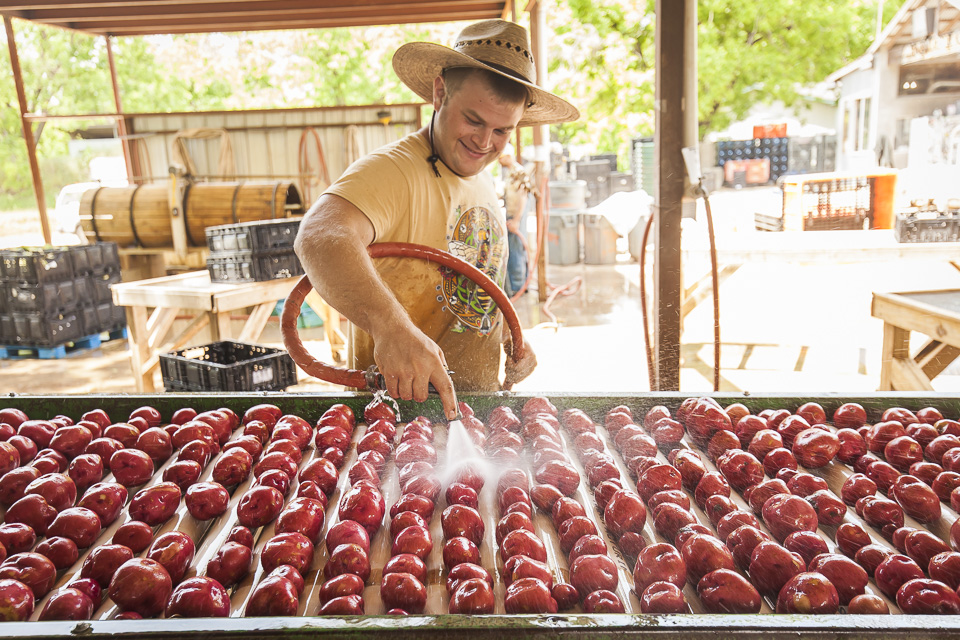 Cleaning potatoes for markets at Hergotz! Photo by Scott David Gordon.
Cleaning potatoes for markets at Hergotz! Photo by Scott David Gordon.
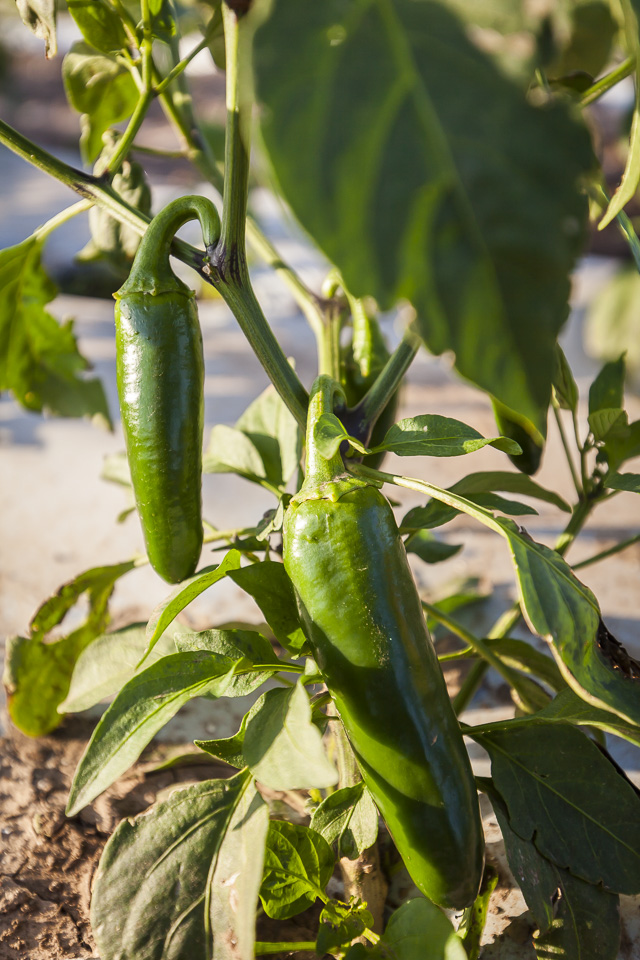 Peppers! It's heatin' up! Photo by Scott David Gordon.
Peppers! It's heatin' up! Photo by Scott David Gordon.
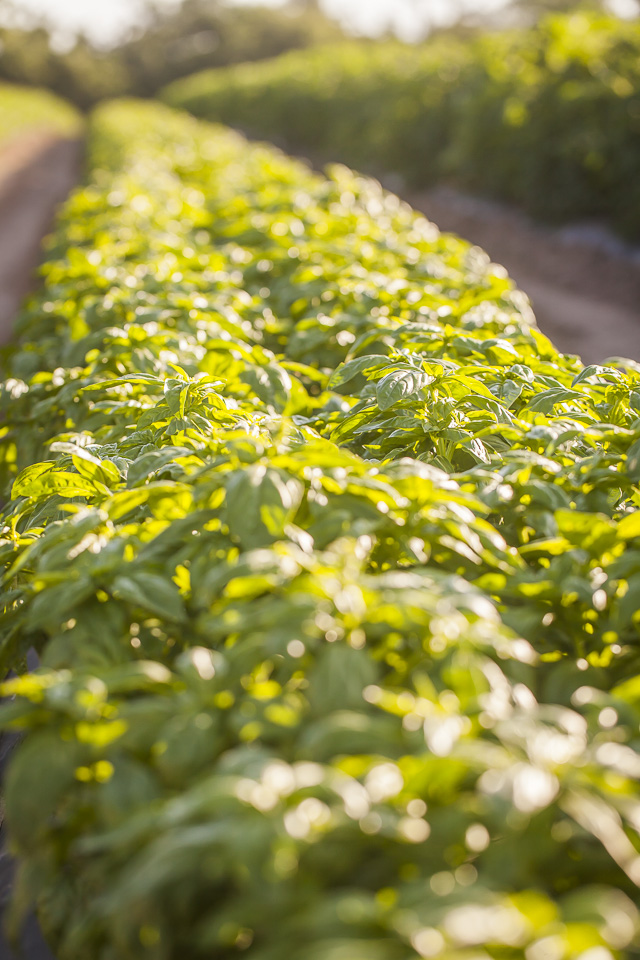 Beautiful basil. Photo by Scott David Gordon.
Beautiful basil. Photo by Scott David Gordon.
This week has also been a bit of a logistical nightmare at Hergotz! Our reefer truck, which we need to do our Whole Foods distributions among other things, broke down. This truck has been giving us some trouble recently, and farm mechanics have worked their magic on this baby quite a bit. However, it has delivered its final case of kale and is now 'condemned' in our Operation Manager, Krishna's words. The engine needs replacing, which has a price tag of over $20,000. All that to say, we're going to try to replace the vehicle altogether. In addition to our reefer, one of our other delivery vehicles died on the same day that our forklift's starter decided to break... which was on the same day that several folks in the barn were on vacation! There was lots of hand-loading trucks and last-minute staff-shuffling as you can imagine. Our cooler managers were delivery drivers, our marketing managers were CSA crew members, our bulk crew helped with distribution, our drivers acted as mechanics, and even Krishna helped with market preparations. We're tired, to say the least. Come see us at markets this weekend! 'Til next time!
WEEK 19 IN PHOTOS
05/11/18 — Heydon Hatcher
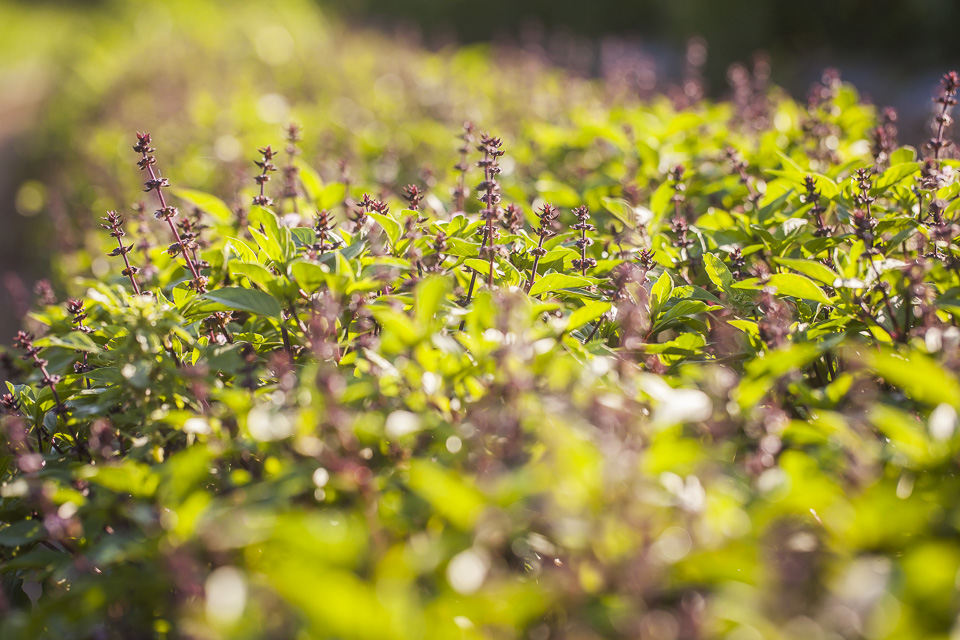 Thai Basil gorgeousness. Photo by Scott David Gordon.
Thai Basil gorgeousness. Photo by Scott David Gordon.
The farm is busy as ever right now. We have so many veggies our heads are spinning! This week, our stellar farm photographer, Scott David Gordon, got up close and personal with the sweet potato planting process. Check out the images below!
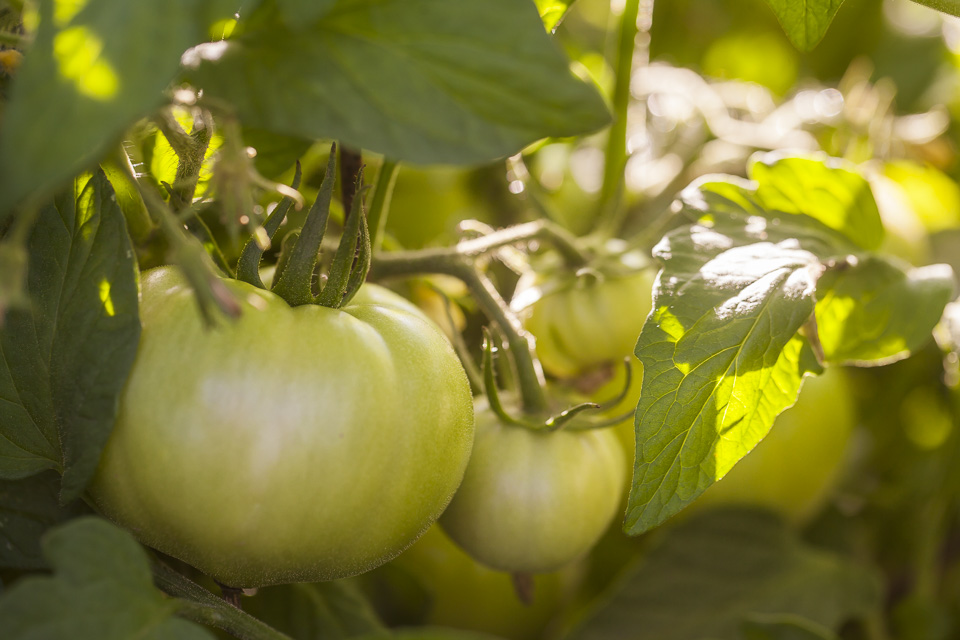 Green tomatoes basking in filtered sunlight. Photo by Scott David Gordon.
Green tomatoes basking in filtered sunlight. Photo by Scott David Gordon.
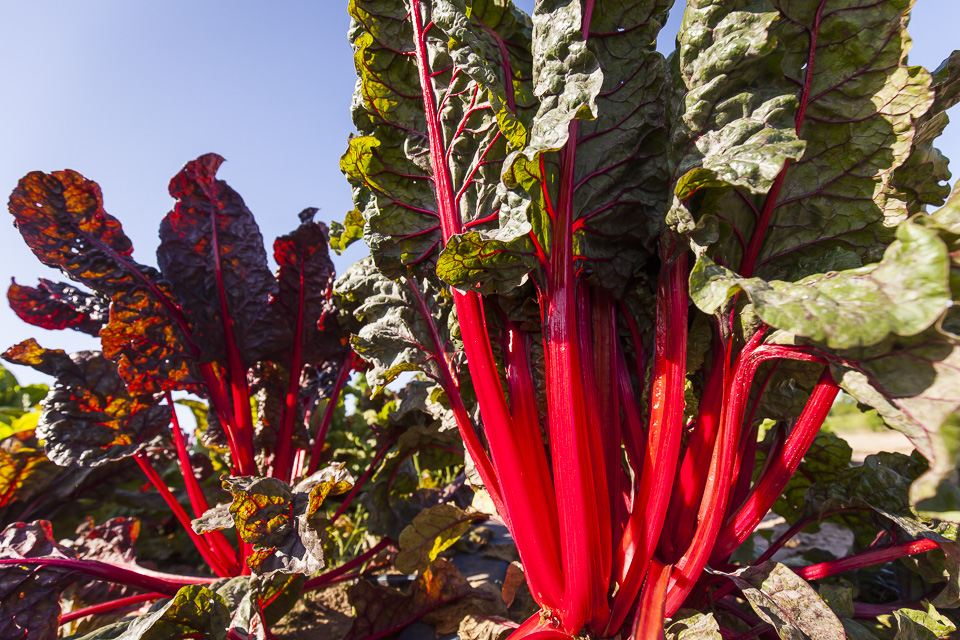 Stunning reds of the chard crop. Photo by Scott David Gordon.
Stunning reds of the chard crop. Photo by Scott David Gordon.
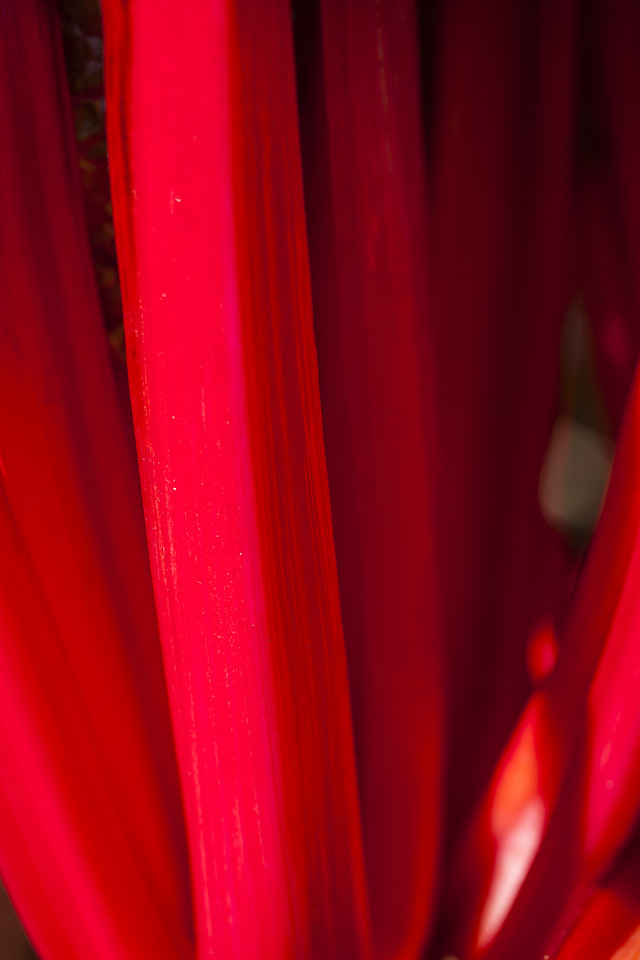 Chard red. Photo by Scott David Gordon.
Chard red. Photo by Scott David Gordon.
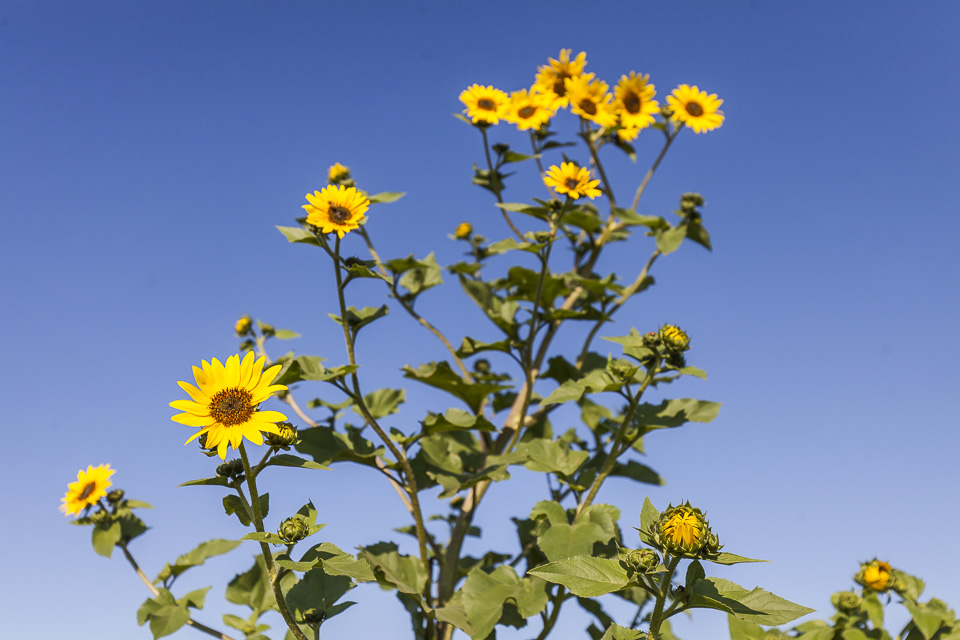 Sunflower sisters. Photo by Scott David Gordon.
Sunflower sisters. Photo by Scott David Gordon.
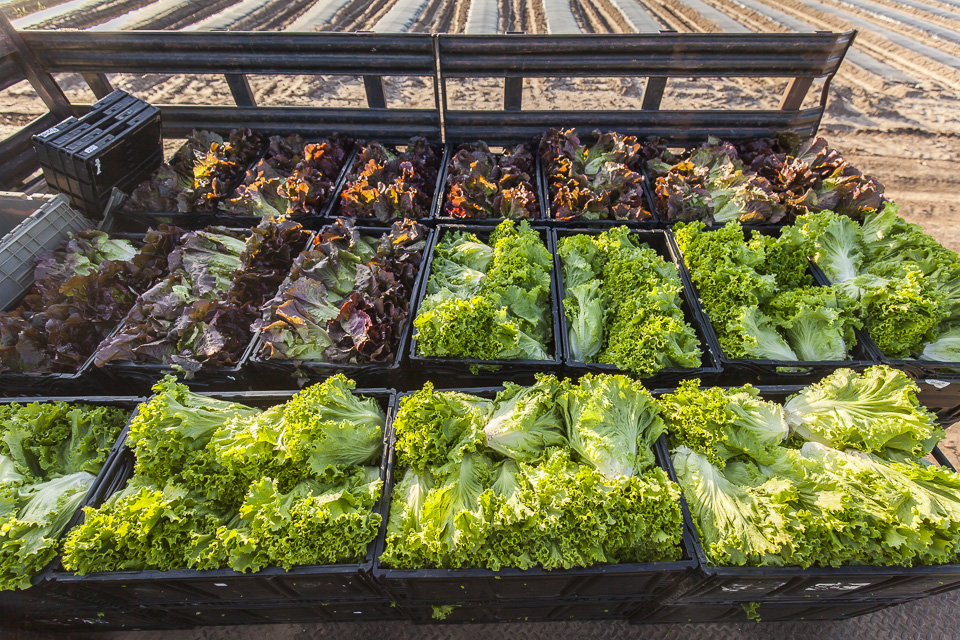 Loading up on greens. Photo by Scott David Gordon.
Loading up on greens. Photo by Scott David Gordon.
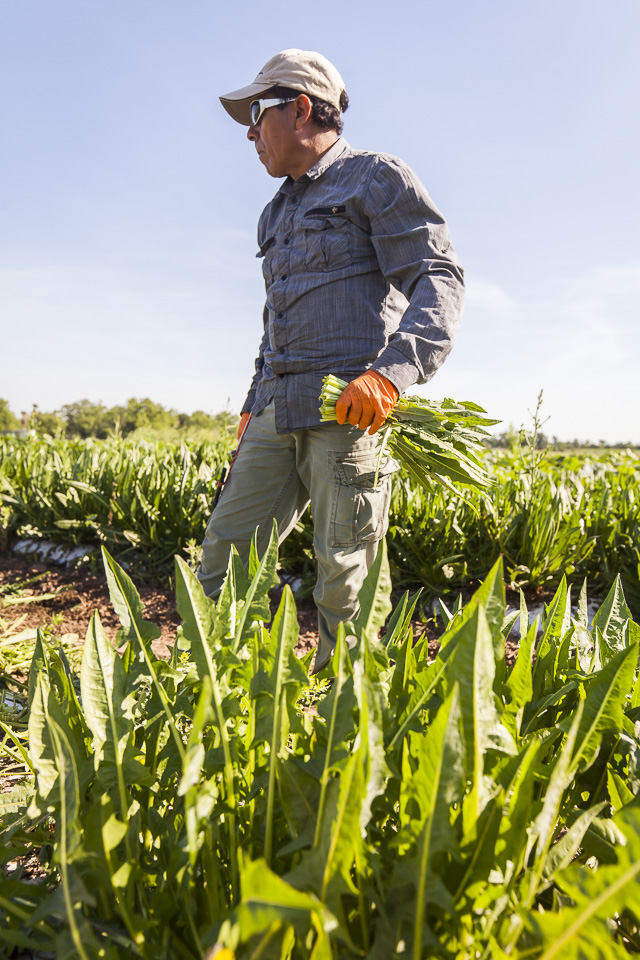 Dandelion green harvesting. Photo by Scott David Gordon.
Dandelion green harvesting. Photo by Scott David Gordon.
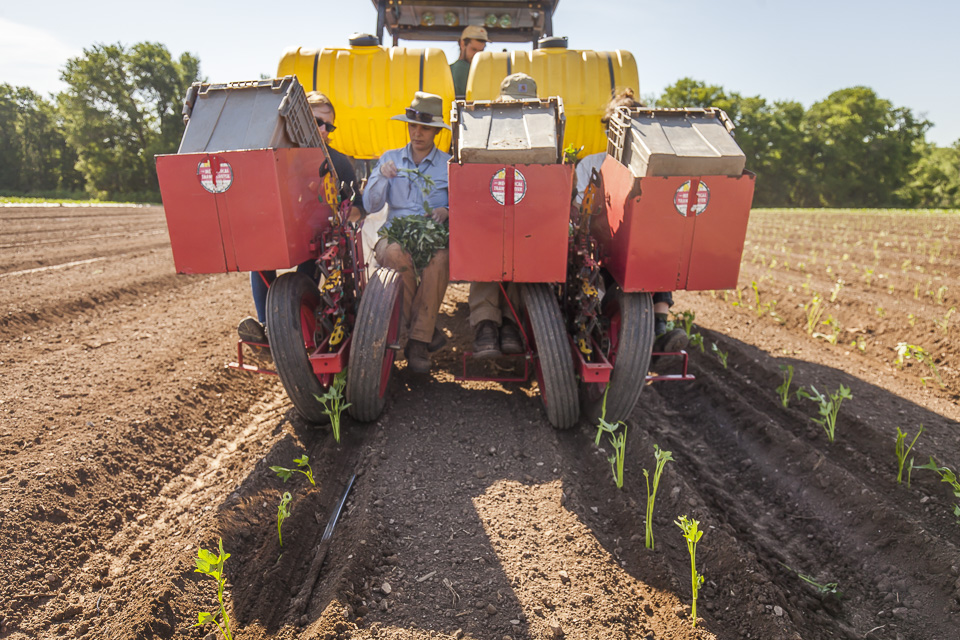 Planting sweet potato slips. Photo by Scott David Gordon.
Planting sweet potato slips. Photo by Scott David Gordon.
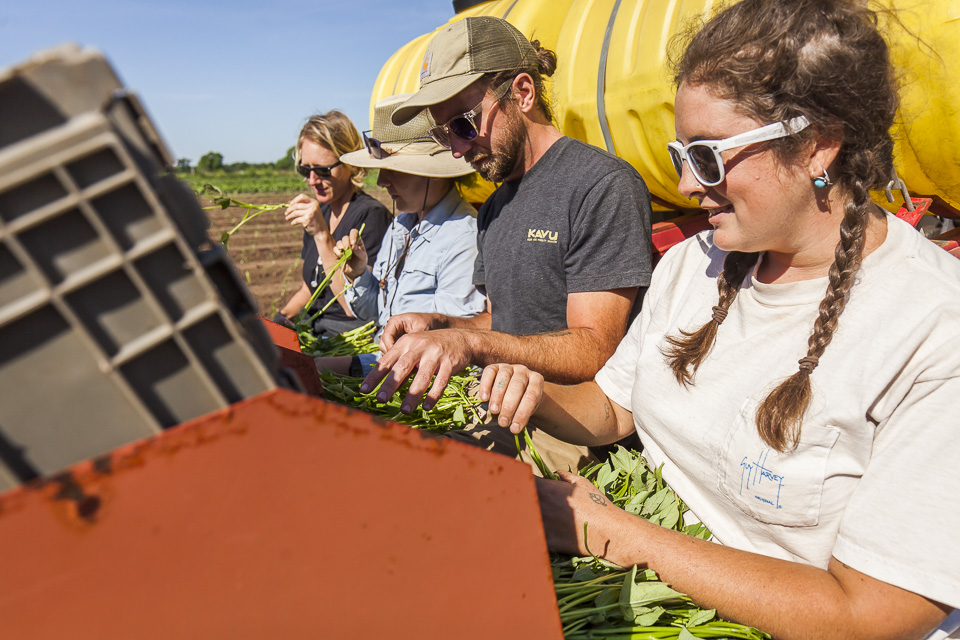 Planting sweet potato slips. Photo by Scott David Gordon.
Planting sweet potato slips. Photo by Scott David Gordon.
 Planting sweet potato slips. Photo by Scott David Gordon.
Planting sweet potato slips. Photo by Scott David Gordon.
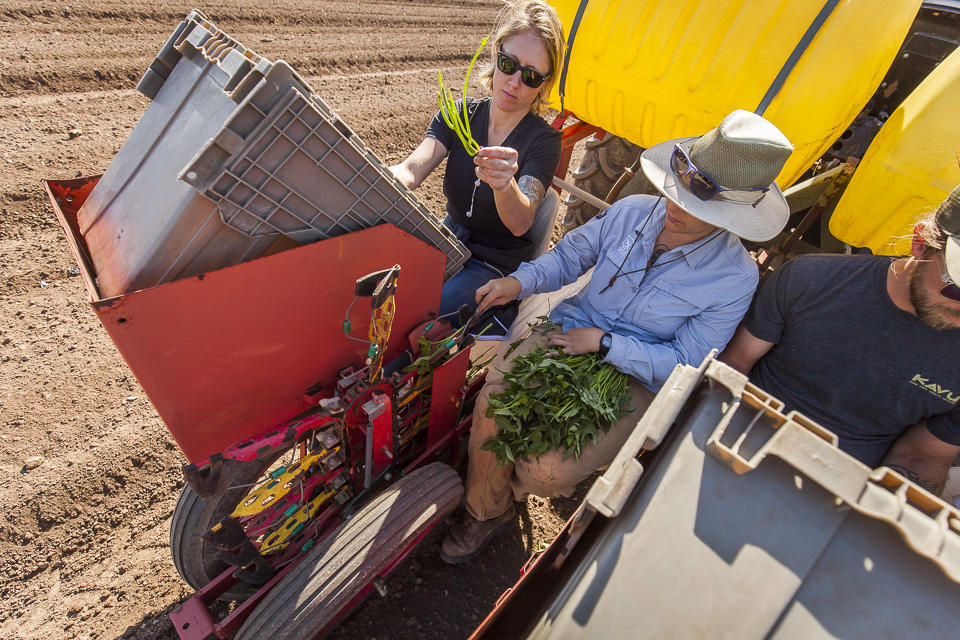 Planting sweet potato slips. Photo by Scott David Gordon.
Planting sweet potato slips. Photo by Scott David Gordon.
 Making sure the slips are safely rooted for growth. Photo by Scott David Gordon.
Making sure the slips are safely rooted for growth. Photo by Scott David Gordon.
 Preparing beds for more summer crops. Photo by Scott David Gordon.
Preparing beds for more summer crops. Photo by Scott David Gordon.
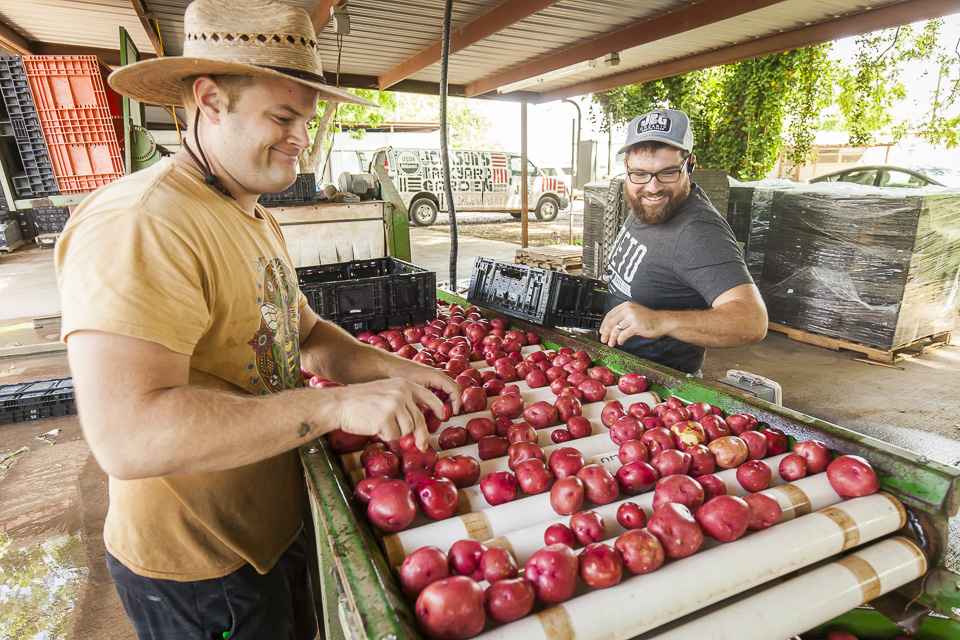 Cleaning potatoes at Hergotz. Photo by Scott David Gordon.
Cleaning potatoes at Hergotz. Photo by Scott David Gordon.
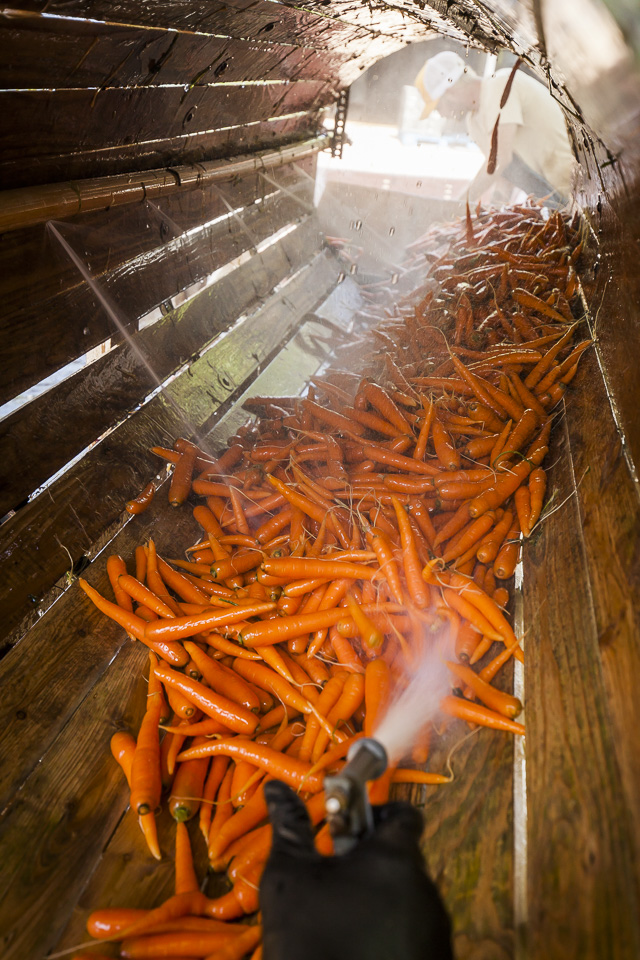 Cleaning carrots! Photo by Scott David Gordon.
Cleaning carrots! Photo by Scott David Gordon.SAUCE VERTE, SALSA VERDE, CHIMICHURRI - VARIATIONS AND SERVING IDEAS
05/10/18 — Heydon Hatcher
Recipe and Photos by Nadia Tamby
Bunches of herbs always seem to go bad unless you have a specific need for them. Even then, you’re often left with too many. I always think I’ll keep them and use them for something else and they end up getting brown in the fridge. On a side note, if you are going to store your herbs for longer, I recommend washing them and then drying them in a clean kitchen towel (just roll them up gently), then placing the damp towel of herbs in a container or Ziploc bag. Anyway – back to the recipe. This sauce takes all of 5 minutes to make and you don’t need to fully dry or chop the herbs first (as long as you have a food processor or blender). If you are only equipped with a knife and cutting board, finely chop the herbs and garlic and you will have something more similar to chimichurri. Somehow whenever I chop a large bunch of herbs they seem to go in every direction off the cutting board so I like skipping the chopping step! This is a great way to use up all your leftover herbs. This sauce is delicious as a marinade, used to top grilled fish or meat, can be diluted with more olive oil and lemon juice to make a salad dressing, or swirled into hummus or yogurt to make dips.
I have made many different versions of this “green sauce” but it is generally a combination of green herbs, raw garlic cloves, salt and olive oil and a splash of lemon juice or vinegar.
![]()
Ingredients
Any combination of these herbs (use the equivalent of 2 bunches for this recipe):
Instructions:
Combine the Sauce Verte ingredients into a food processor and blend until you have a smooth, bright green sauce. I spoon this into a jar and top it with an extra bit of olive oil to prevent it from oxidizing and turning brown. It will keep for 2 weeks in the fridge.
![]()
Some serving ideas:
Roasted or grilled lamb chops or lamb meatballs with a mint-heavy sauce verte (you could add rosemary to this too), and maybe even swirled into yogurt as a sauce.
Fish served with a sauce verte made with cilantro, lime juice and zest, garlic, honey, and fish sauce (instead of salt).
Grilled steak and vegetable with traditional chimichurri (parsley, oregano, crushed red pepper, red wine vinegar, and garlic). Chop the herbs finely and whisk ingredients together.
Green goddess dressing: basil, parsley, and tarragon as the herbs and blend it with a few tablespoons of Greek yogurt and mayonnaise. Use it as a dipping sauce or thin it out with more olive oil and lemon juice to use as a salad dressing.
Bunches of herbs always seem to go bad unless you have a specific need for them. Even then, you’re often left with too many. I always think I’ll keep them and use them for something else and they end up getting brown in the fridge. On a side note, if you are going to store your herbs for longer, I recommend washing them and then drying them in a clean kitchen towel (just roll them up gently), then placing the damp towel of herbs in a container or Ziploc bag. Anyway – back to the recipe. This sauce takes all of 5 minutes to make and you don’t need to fully dry or chop the herbs first (as long as you have a food processor or blender). If you are only equipped with a knife and cutting board, finely chop the herbs and garlic and you will have something more similar to chimichurri. Somehow whenever I chop a large bunch of herbs they seem to go in every direction off the cutting board so I like skipping the chopping step! This is a great way to use up all your leftover herbs. This sauce is delicious as a marinade, used to top grilled fish or meat, can be diluted with more olive oil and lemon juice to make a salad dressing, or swirled into hummus or yogurt to make dips.
I have made many different versions of this “green sauce” but it is generally a combination of green herbs, raw garlic cloves, salt and olive oil and a splash of lemon juice or vinegar.
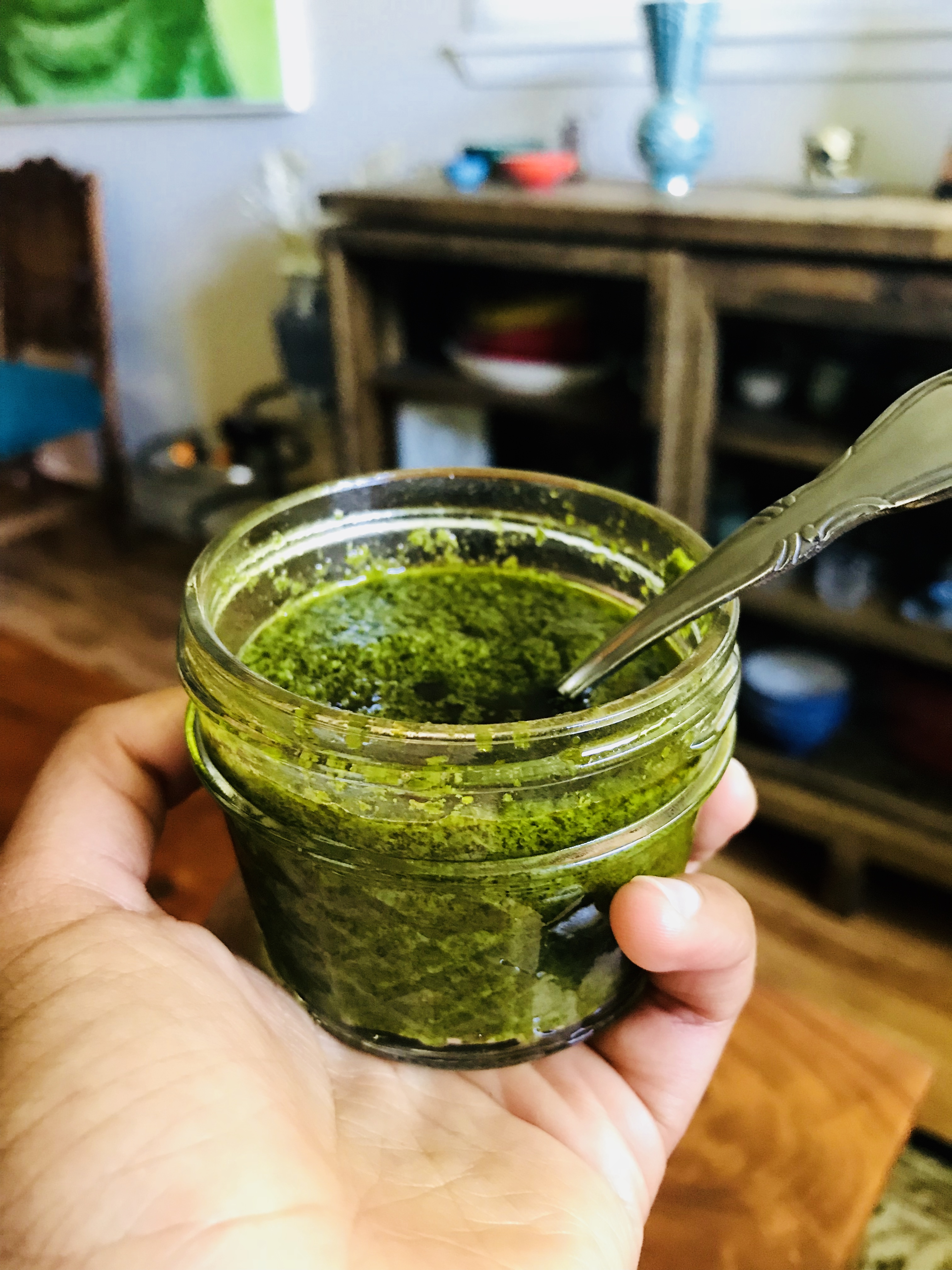
Ingredients
Any combination of these herbs (use the equivalent of 2 bunches for this recipe):
- 1 bunch of cilantro (just tear off the bottom part of the stems, you can use cilantro stems in addition to the leaves)
- 1 bunch of mint (discard stems)
- 1 bunch of flat-leaf parsley (discard stems)
- 1 bunch basil (discard stems)
- 1 bunch of oregano (discard stems)
- Thyme and rosemary can be used as well, but use sparingly – they are strongly flavored and will overpower the other herbs
- 2 garlic cloves
- ½ cup vegetable, olive oil, or extra virgin olive oil (or more, if needed)
- ½ lemon (juice and zest) or 2-3 tablespoons red wine vinegar, apple cider vinegar, sherry vinegar, or rice vinegar
- Salt and pepper, to taste (about ½ teaspoon salt)
- 1 teaspoon crushed red pepper flakes (optional)
- 1 teaspoon honey (optional)
Instructions:
Combine the Sauce Verte ingredients into a food processor and blend until you have a smooth, bright green sauce. I spoon this into a jar and top it with an extra bit of olive oil to prevent it from oxidizing and turning brown. It will keep for 2 weeks in the fridge.
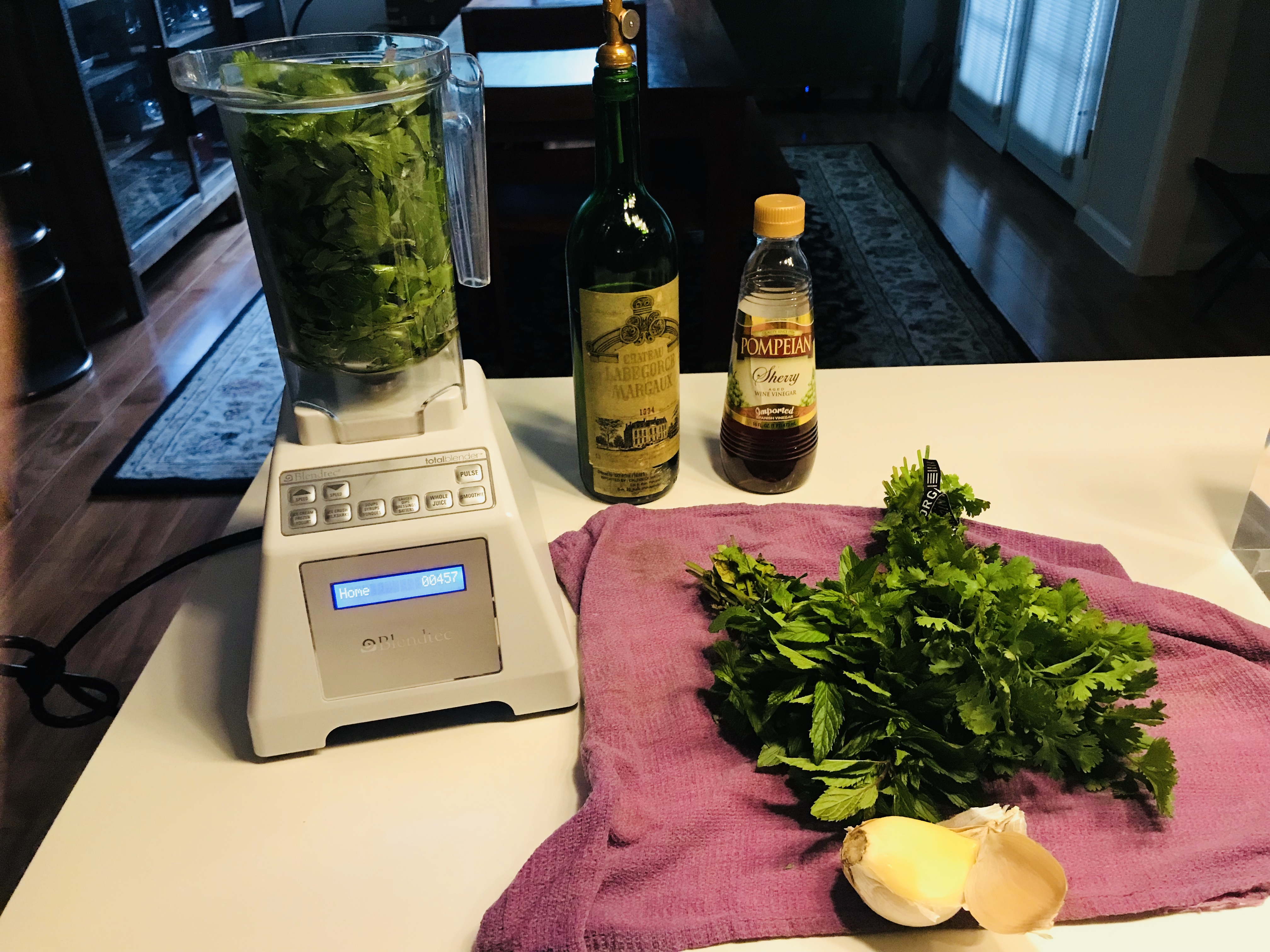
Some serving ideas:
Roasted or grilled lamb chops or lamb meatballs with a mint-heavy sauce verte (you could add rosemary to this too), and maybe even swirled into yogurt as a sauce.
Fish served with a sauce verte made with cilantro, lime juice and zest, garlic, honey, and fish sauce (instead of salt).
Grilled steak and vegetable with traditional chimichurri (parsley, oregano, crushed red pepper, red wine vinegar, and garlic). Chop the herbs finely and whisk ingredients together.
Green goddess dressing: basil, parsley, and tarragon as the herbs and blend it with a few tablespoons of Greek yogurt and mayonnaise. Use it as a dipping sauce or thin it out with more olive oil and lemon juice to use as a salad dressing.






 0 ITEMS IN CART
0 ITEMS IN CART 

